When historians look to the records to understand the human side of our history, it is almost always the written word on which they focus. From the accounts of ancient historians to the mundane records of prosaic transactional life, much of our understanding of history comes from what was written down.
These accounts often need unpicking. Multiple viewpoints are usually layered on top of the description, suiting whatever motivations the historian or record keeper wanted to include.
Take, for example, the Bible. Supposedly much of the Old Testament was found by priests while renovating a temple in Jerusalem, and brought before the king at the time: Josiah. The text as presented by the priests was a strict and dogmatic ruleset for Judaism, apparently ancient beyond question and with (surprise, surprise) the priesthood at the center.
But not to worry, these scrolls also talked of a prophecy whereby Josiah would be the chosen king, who would unite Israel as another David. Josiah bought the story, sallied forth against his Egyptian oppressors with an army, and was promptly killed.
Often, as with the case above, it is the more recent gloss which is as interested as the original message. And this is rarely seen better than in artwork, where ancient events are given a modern spin.
Here are six such examples.
1. Alexander and the Diving Bell
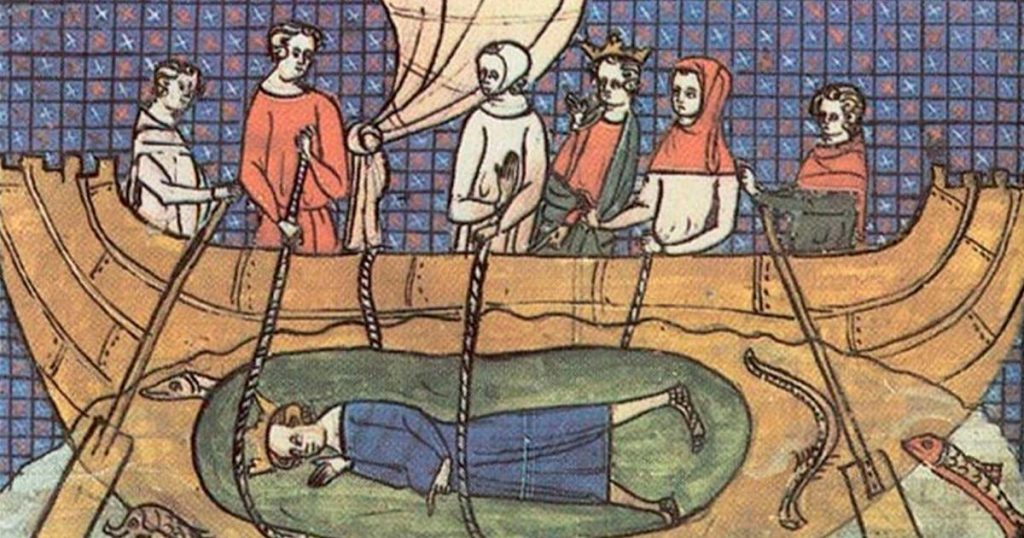
2. 14th Century Bear Baiting
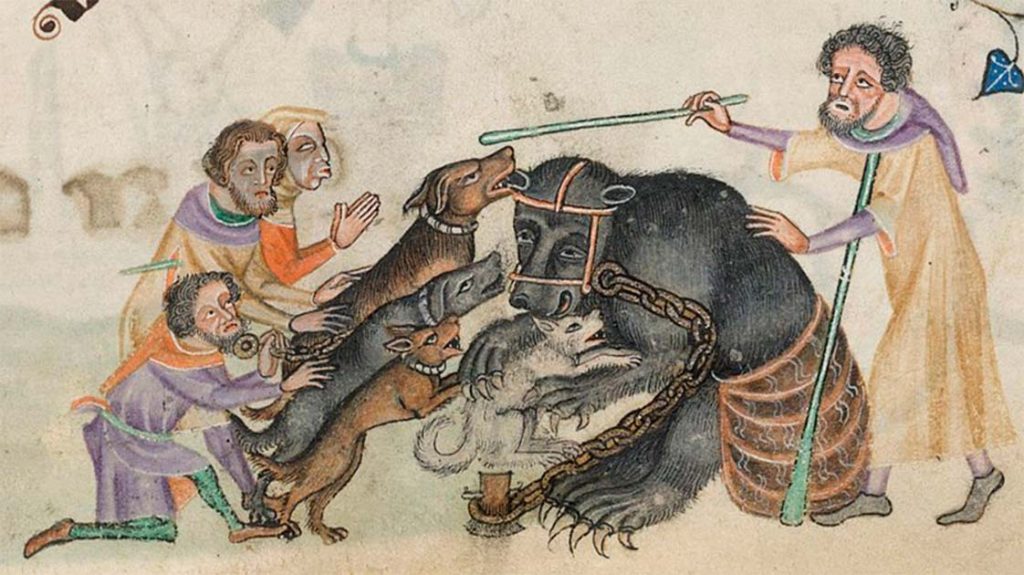
3. Golf in the Margins
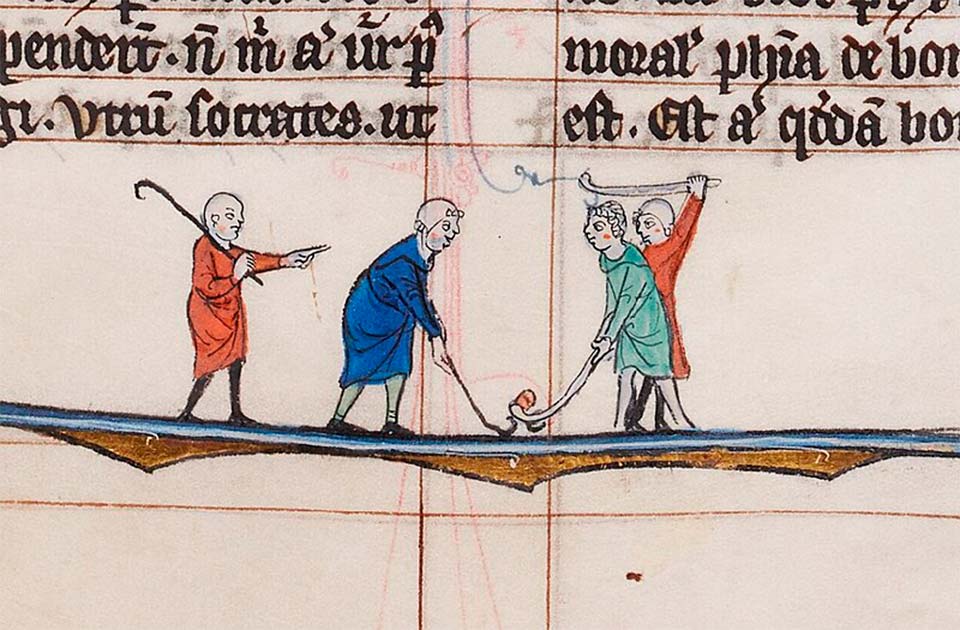
4. Medieval Baseball

5. Nudity Behind Closed Doors
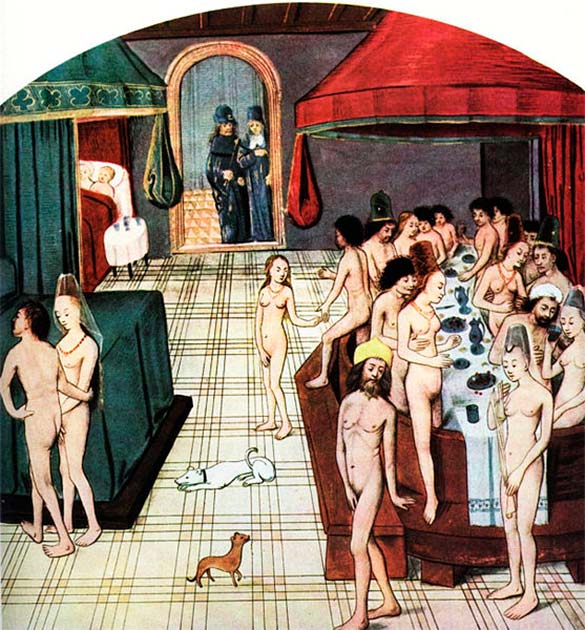
6. Mad Dogs and Araby
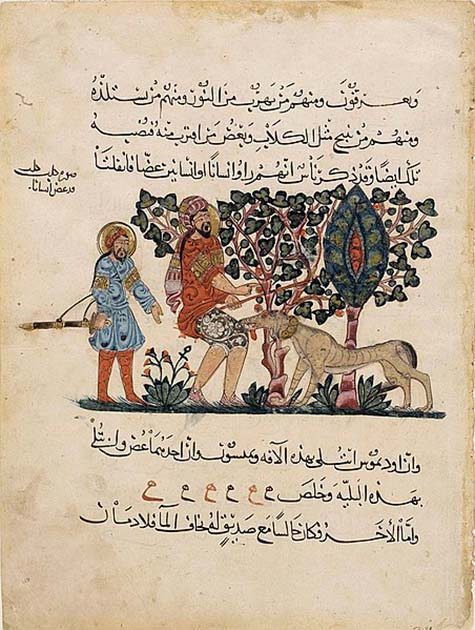
Top Image: This painting by the Master of Trecento in 1350 showing the bargaining for the cloth of the crucifixion tells us as much about 14th century Italy as it does the Bible. Source: Master of Trecento / Public Domain.